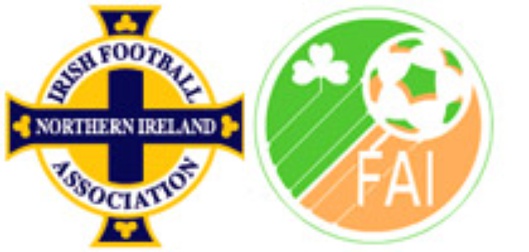When Sport and Politics Don't Mix
Published on
Football is often seen as a great leveller, uniting fellow countrymen and women behind the national team. But what about when a nation is already divided? Can football overcome these divisions or does it make them worse?

A case in point
Northern Ireland – a place where everything is political from the newspaper you read, to the pub you drink in, to the football team you support. In this context, the fabric of everyday life builds up to form two distinct polar identities: Catholic/Protestant, Nationalist (whose objective is a united Ireland)/Unionist (who want to remain in the union with Britain).
What does it say about someone who supports Northern Ireland? Well, for the unionist population it is a way of celebrating their identity in much the way any national team inspires pride, passion and hope. However the bitter sectarian chants and hostile atmosphere towards Catholics make Windsor Park (where home games are played) a no-go area for all but the staunchest football fan.
Indeed even the players need nerves of steel. As recently as 2003, a Catholic footballer who played for Celtic (in Scotland) received death threats from a loyalist paramilitary organization against him and his family when he was selected to play for Northern Ireland. The reaction of the IFA was underwhelming, and the player – Neil Lennon – felt he had no option but to retire from international football while at his peak to protect himself and his family.
As usual in Northern Ireland, the main issue is always clouded in a haze of political agenda – so talking about football means talking about more than football. For nationalists, to support the Northern Ireland football team translates into an acceptance of the Northern Irish state, legitimizes the division of Ireland in two and is seen as a betrayal of what should be their true allegiances to the Republic of Ireland. With all this in the background, is it any wonder football matches take on huge significance?
Rugby rules
The story changes where rugby is concerned. Historical developments have meant that the Irish Rugby Football Union (IRFU) is an all-island body, governing one national team. Rugby was first played by students of Dublin University (Trinity College) who mostly came from the English upper classes. Its popularity spread, and was as successful in the north-east of the country as the south-west. While initially there were two ruling bodies, they agreed in 1879 to amalgamate to the IRFU. To accommodate the divided political allegiances of its players and supporters after partition in 1921, two anthems are played at home games – the Republic of Ireland national anthem and the more generic ‘Ireland’s Call’.
Football, on the other hand, came to Ireland via the plantations and was concentrated mostly in Ulster (the north-east province, part of which is now Northern Ireland). The ruling body – the Irish Football Association – was based in Belfast, but the rest of the country felt this body was biased towards northern players, in particular Protestant players. After partition in 1921, the Football Association of the Irish Free State was created in an attempt to redress this imbalance. Thus football in Ireland has always suffered from suspicions of politicization.
Class crisis
It can also be said to be suffering one of its lowest periods at the moment. Notwithstanding death threats to players, they have recently set a new record for the length of time played without scoring a goal, and questions have been raised about the standard of their stadium (which is not a national stadium but the home ground of a local soccer team). This slump is having deeper repercussions throughout the unionist community because while supporters of Northern Ireland can be classified along political lines, they can also be distinguished along class lines. As alluded to above, rugby was the sport of the upper classes and football seen as a working class phenomenon. The past successes of certain campaigns – most notably the World Cup in 1982 – and of certain individuals such as George Best, Pat Jennings and Norman Whiteside had allowed a degree of historical pride, but also painfully highlights today’s shortcomings. This feeling of underachievement is exacerbated by the successes of ‘nationalist’ sports such as Gaelic football, albeit on a smaller scale. There has been a huge upsurge in popularity in these sports, partially contributed to by an increased confidence in nationalist identity. Conversely unionist identity now feels more under threat. This perceived threat has manifested itself in more extreme expression of the components that make up that identity.
The nationalist elements behind football support means that football at this level is not going to overcome divisions based on national identity in a society. It is more useful as a technique for bridging racial divisions, such as the ‘Kick out Racism’ campaign in the UK. However steps are being made in Northern Ireland to develop sporting programmes involving young people from both communities in an attempt to overcome sectarianism. While these schemes are to be applauded for fostering understanding and togetherness, national political concerns, while unresolved, will continue to impose its divisions at the sporting level.



